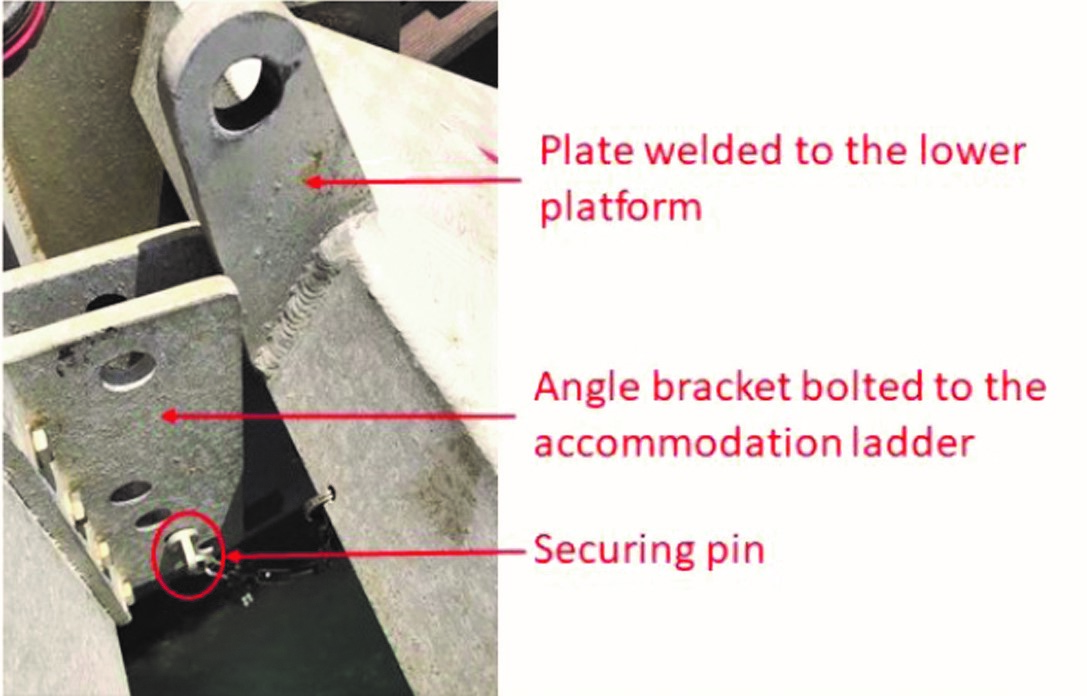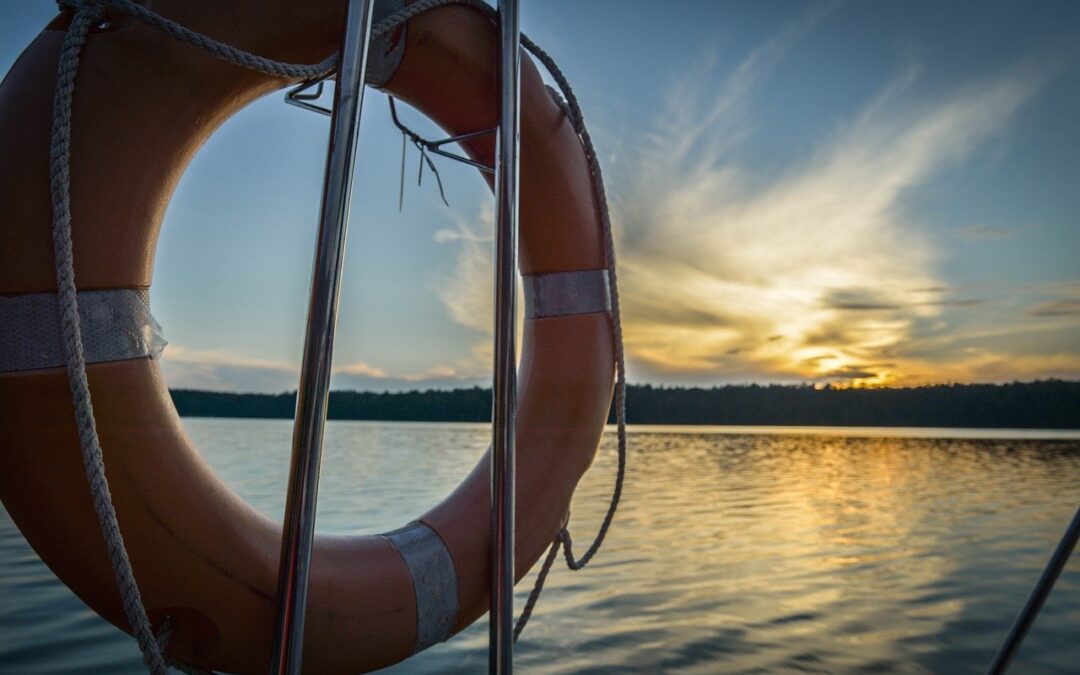A seaman went down an accommodation ladder without putting his lifejacket and safety harness on, without unlookers speaking up about this unsafe act. He lost his balance and fell overboard. Reason for The Nautical Institute to call on seafarers to look after themselves as well as their mates.
The Nautical Institute gathers reports of maritime accidents and near-misses. It then publishes these so-called Mars Reports (anonymously) to prevent other accidents from happening. A summary of this incident:
In the early morning hours, a loaded tanker with seven metres of freeboard was approaching port at about 6.5 knots. There was a light wind and seas of approximately 1 metre. Visibility was good, but it was still dark; sunrise was in about one hour and 45 minutes. The air temperature was 15°C and the sea water temperature was 16°C.
The combination accommodation/pilot ladder was being rigged to allow pilot access. The Bosun and one other seaman were on deck for this task while the officer of the watch (OOW) monitored from the bridge. After lowering the accommodation ladder the bosun and the seaman took off their lifejackets and safety harnesses/lines. They then rigged the pilot ladder, but they found that the lower platform of the accommodation ladder needed adjusting to be parallel with the water. The seaman went down the accommodation ladder without putting his lifejacket and safety harness back on. Neither the bosun nor the OOW in the wheelhouse objected to this unsafe act.
The lower platform is held in position by a securing pin that passes through one of four sets of holes in the angle bracket. The angle of the platform is determined by which set of holes on the angle bracket the securing pin is passed through. Changing the angle of the platform after the accommodation ladder is lowered requires the operator to crouch down to reach and remove the securing pin with one hand while using the other hand to hold onto the rope attached to the platform to reposition it at the intended angle. They can then put the securing pin in the proper set of holes.

While performing this balancing act, the seaman lost his balance and fell overboard. The bosun immediately reported an MOB on the port side to the bridge with his handheld VHF radio and then ran aft to throw a life buoy. He lost sight of the victim when he was about 100 metres astern of the vessel. Meanwhile, the master ordered the rudder hard to starboard. In the flurry of events, the lighted MOB (man overboard) buoy mounted on the bridge wing was not released.
Within twelve minutes the vessel had completed a single turn manoeuvre and reached the position where the victim had fallen overboard. The rescue boat was ready to be launched, but was not used, since local search and rescue (SAR) units and the outbound pilot boat were already tasked to search for the victim. The pilot assigned to the vessel embarked to assist the master and coordinate with local authorities. When the victim could not be found after three hours searching, the SAR mission was suspended.
Also read: ‘On safe ships run by quality companies, persons washed overboard should be zero’
Advice from The Nautical Institute
- Actual MOB events are rather rare but when they happen, they are often serious or fatal for the victim. Numerous quick and decisive actions must be taken by the vessel’s crew. For this reason, realistic MOB exercises are regularly performed to imprint the actions into rote memory. In this case, many of those actions were performed well but two critical ones were not:
– The vessel was turned to starboard for a port side MOB. Normally the vessel should always be turned to the same side as the victim to throw the stern clear of the victim.
– The bridge wing lighted MOB buoy was not released. This should be an automatic gesture by the OOW in any real MOB situation. - PPE, PPE, PPE (personal protective equipment). Every time someone works overboard they should be wearing a lifejacket and a well secured safety harness.
- Look after yourself but also look after your mates! The victim decided to go down the accommodation ladder without his lifejacket and safety harness/line. Yet, both the OOW on the bridge watching the work and the Bosun acquiesced to this unsafe act.
- If acrobatic acts are necessary to complete a task, that means the task should probably not be completed under those conditions.
Also read: Man overboard while rigging the pilot ladder
Mars Reports
This accident was covered in the Mars Reports, originally published as Mars 202250, that are part of Report Number 362. A selection of this Mars Report was also published in SWZ|Maritime’s January 2023 issue. The Nautical Institute compiles these reports to help prevent maritime accidents. That is why they are also published (in full) on SWZ|Maritime’s website.
More reports are needed to keep the scheme interesting and informative. All reports are read only by the Mars coordinator and are treated in the strictest confidence. To submit a report, please use the Mars report form.








